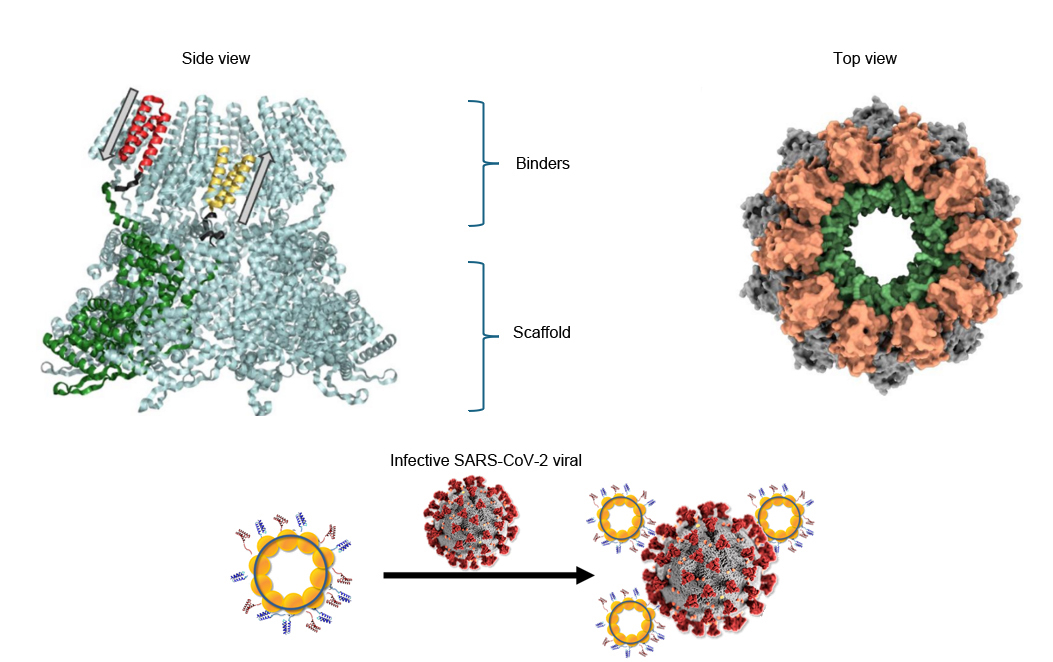An international team of scientists has generated a new ring-shaped protein nanomaterial capable of strongly binding to and neutralising the SARS-CoV2 virus. The study, published in Advanced HealthCare Materials, highlights the versatility of the system devised to design the nanorings, which can integrate therapeutic and diagnostic capabilities, and be adapted to combat other viruses.

The work was carried out by researchers from the Institute of Biotechnology and Biomedicine of the Universitat Autònoma de Barcelona (IBB-UAB) and the National Council for Scientific and Technical Research (CONICET) of Argentina.
The new nanomaterial is formed by a scaffold based on recombinant ring-like proteins (RLPs), to which mini proteins created by the team of experts in a previous study were incorporated. This structure (RLP-1,3), which contains up to twenty points of attachment of the mini proteins to the virus, self-assembles into stable, biocompatible and homogeneous nanoparticles that adhere very powerfully to the infectious particle of the virus, Spike-ACE2, and neutralise it.
"The virus-binding activity of the new nanoparticle exceeds that of benchmark monoclonal antibodies and clinically approved hyperimmune therapies", explains Salvador Ventura, researcher at the IBB-UAB and director of the Parc Taulí Institute for Research and Innovation (I3PT), who co-led the research. "In addition, we have seen that it can also be adapted for the diagnosis of infection, with a detection level higher than that of commercial assays", he adds.
To create the nanoring, researchers were inspired by the properties of safe structures present in some viruses. "The result we obtained demonstrates how integrating nanoscaffolds based on these structures with the design of miniproteins with AI allows creating state-of-the-art multifunctional biomaterials", highlights Damián Alvarez-Paggi, director of the Nanobioengineering Laboratory at CONICET.
The system researchers designed allows the mini proteins to be changed for others of interest to inhibit other viruses. The nanoring, which has been patented by the UAB and CONICET, thus offers a solution that allows new molecules with therapeutic and diagnostic capacity to be "plugged in" and "unplugged", positioning it as a flexible alternative in the face of infectious outbreaks or pandemics, researchers conclude.
Original article: M. Behbahanipour, C. Goldin, C. A. Prato, et al. Multivalent Protein Nanorings for Broad and Potent SARS-CoV-2 Neutralization. Adv. Healthcare Mater. (2025): e03487. https://doi.org/10.1002/adhm.202503487






